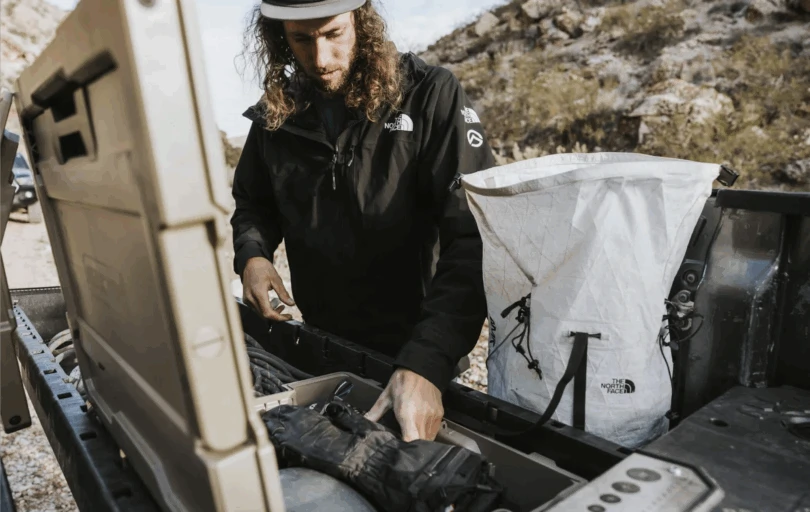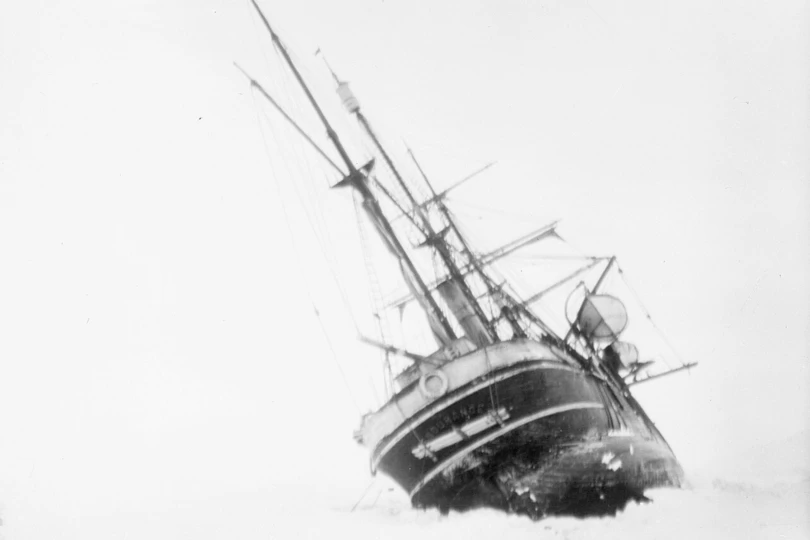When REI launches its first paper magazine this fall, it will instantly be among the largest publishers of outdoor media in the United States. What does that mean for the retail juggernaut and the role of journalism in marketing? We reached out to the editors of the upcoming magazine, Uncommon Path, to learn more.
This fall, REI will kill its full-price paper catalog and replace it with an editorial magazine filled with gear advice, adventure stories, profiles, and a lot more. Hitting newsstands (and a lot of mailboxes) around Sept. 15, the 84-page publication will reach 700,000 outdoor enthusiasts.
That will put it head-to-head with some of the largest outdoors-focused print magazines in the country. For context, Outside Magazine has a print circulation of about 675,000 copies, according to its media kit.
While REI’s immense initial circulation is largely a product of its ready-made mailing list of 17 million members, the editors say they’re taking their responsibility to journalism seriously. REI’s broad reach gives the retail juggernaut a unique marketing opportunity, but it also raises questions about journalistic ethics to a new level of discourse.

Paolo Mottola, the Director of Content and Media at REI Co-op, said the magazine will be transparent with readers about its point of view. He said that he takes the role of an influential voice in the industry seriously.
“We’ve asked, ‘How can REI be really transparent in what it is?’ People understand that REI is a retailer. It’s coming from an organization that has a point of view,” Mottola said. “We’re not delivering independent journalism. We’re delivering content that has a point of view and we want to be transparent and disclose that point of view.”
Magazine With a Viewpoint
REI’s advocacy efforts carry a bias toward conservation of the outdoors and celebrating the people who love to recreate there. It claims to be a strictly non-partisan company. But it still has made waves from time to time. Former CEO Sally Jewell went on to work as Secretary of the Interior under Barack Obama. The retailer also cut ties with brands owned by Vista Outdoor, which also owned firearm brands, due to a lack of dialogue around firearms in the wake of the Parkland, Florida, school shooting (and then rebuilt those ties after Vista Outdoor sold its firearm brands this week). Its media wing highlights people from diverse ethnic backgrounds and sexual orientations, and it takes a strong stance on conservation.
But while REI pushes a message of inclusivity in the outdoor community that tends to carry a liberal worldview, the unifying thread is a strong promotion of the outdoors and love of adventure.
“From an industry standpoint, REI’s consistent role is inviting and welcoming people into the outdoors,” Mottola said.
Catalog to Magazine: REI Leans Into Media
According to editors at Uncommon Path, REI pivoted from its well-known catalog to a magazine because of editorial success in the digital realm. The magazine, Mottola said, is in line with REI’s other media programs.
“Over the last few years, the catalog has mixed in more and more editorial (content). We were seeing a lot of good success in other content programs, so (we) asked, ‘Why not really expand our page count editorially? Why not extend what is already working digitally?'”

Michelle Flandreau, Uncommon Path senior editor, explained that REI already takes an editorial approach in its online blog, the Co-op Journal.
“Hopefully this mag will give people the opportunity to slow down, connect, and read stories about getting outside — and then get outside,” she said.
REI will distribute the magazine to many of its 17 million members. Some members noted that a paper magazine creates a larger carbon footprint — due to shipping, production, and disposal — than digital platforms. Mottola said that REI strives to minimize its impact, using Forest Stewardship Council certified paper and recycled materials. However, members who don’t want to receive the magazine can easily opt-out.
Storytelling and Transparency
While REI clearly will use the magazine to promote its brand and products, the editorial leaders say they understand the serious responsibility they have to maintain journalistic ethics in their storytelling. They say the magazine will aim for transparency in its advocacy and bias toward the outdoors and conservation. Plus, both Flandreau and Mottola have degrees in journalism. Flandreau even has significant experience in investigative reporting at WBIR-TV news in Knoxville, Tennessee.
“We recognize we have an inherent bias,” Flandreau said. “We want to be advocates for the outdoors, but we want to take great care of the principles and practices we see in the journalism world.”
Still, don’t expect REI to report on itself the way a third-party news organization would.
“Our goal is to promote stories that inspire people and make the outdoors welcoming and inclusive,” Mottola said.
Hearst Partnership
Magazines are an expensive business. They require a staff of writers (seven in-house REI editors, plus freelancers, in this case). Sales teams, production, and circulation staff all mix into the overhead.
To that end, REI hired out a lot of the work to media conglomerate Hearst. Owner of more than 300 magazines, from Men’s Health and Cosmopolitan, to Car and Driver, and minority stakeholder of Gear Patrol, Hearst will manage Uncommon Path’s advertising relationships. It will also manage copy editing and layout of the magazine. Hearst’s team of writers and editors could also prove a valuable asset as REI produces the quarterly publication.
Of the 84 pages in the first issue, the magazine will carry about a dozen full-page ads. While many of these advertisers will likely be REI vendors, Mottola noted that the magazine will also be open to non-endemic advertising for products that REI does not carry on its shelves — for example, hospitality or automotive ads.
And while REI will sell ads for the magazine and sell it on newsstands, the retailer sees it more as a marketing initiative than a profit-making product.
“We are producing a form of advocacy that has a bias to promote a life outside. It aims to create more engagement with the outdoors and REI,” Mottola said.
Stories of the Outdoors
So what can members expect in this new magazine landing on their doorsteps this fall?
“One story that I’m excited about is how cities are creating green space in new ways within city limits,” Flandreau said. “The outdoors doesn’t always have to be this grand epic adventure. There are innovative cities planning and making green space in unexpected places like Tulsa, Oklahoma, which is taking a new approach to city parks.”
Another story coming in the first edition addresses how gear can help people reduce their environmental impact. Yet another profiles the group Civil Bikes, which offers civil rights teaching tours of Atlanta by bicycle.
Mottola and Flandreau both recognize that the magazine will overlap some existing publications, but they hope the additional information will help encourage more people to ultimately get outdoors.
“We’re hoping to expand the volume of outdoor journalism,” Mottola said. “The expansion of that, the number of stories, the appeal of a cover story on the newsstands, is really what we are going after. I think there will be some similarities and some potential overlap, but we are adding volume to the number of stories people can find themselves in.”








